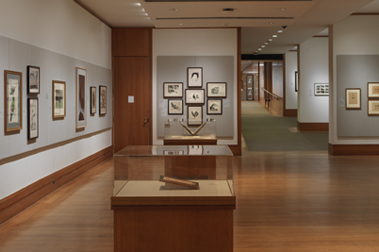The Lady Guldeforde (Mary Wotton, Lady Guildford)
Etcher Wenceslaus Hollar Bohemian
After Hans Holbein the Younger German
Sitter Mary Wotton, Lady Guildford British
Not on view
Hollar's print is based on a Holbein portrait (St. Louis Art Museum; early copy at the Metropolitan Museum, 20.155.4). We see the sitter nearly half-length, looking towards the viewer and wearing a jewelled bonnet, a veil and pendant necklace, with chains looped across the front of her bodice. The image is contained in a roundel.
Born Mary Wotton, the subject became Sir Henry Guildford's (1489-1532) second wife in 1525. Her husband held important positions in the court of Henry VIII and Mary joined the household of Queen Katherine of Aragon. After her husband's death Mary married Sir Gawain Carew and became close to the king's last wife Katherine Parr.
Part of a prominent family, the sitter's father Robert Wotton was Controller of the Royal Household and a Garter Knight. Her brother, Nicholas was a diplomat and served Queen Mary Tudor as Ambassador to France. Mary Wotton's sister became Marchioness of Dorset at her marriage and later Duchess of Suffolk.
The Holbein portrait which this print reproduces was one of the German artist's first commissions after arriving in England, painted as a pendant to an image of Mary's husband (Royal Collection, Windsor Castle). In 1527, Guildford, in his capacity as "Master of the Revels," arranged ceremonies at Greenwich to mark a peace accord between England and France. Holbein painted related decorations in a banqueting hall and theater used for the occasion and it seems likely that Guildford met the artist at this time.
This image cannot be enlarged, viewed at full screen, or downloaded.


